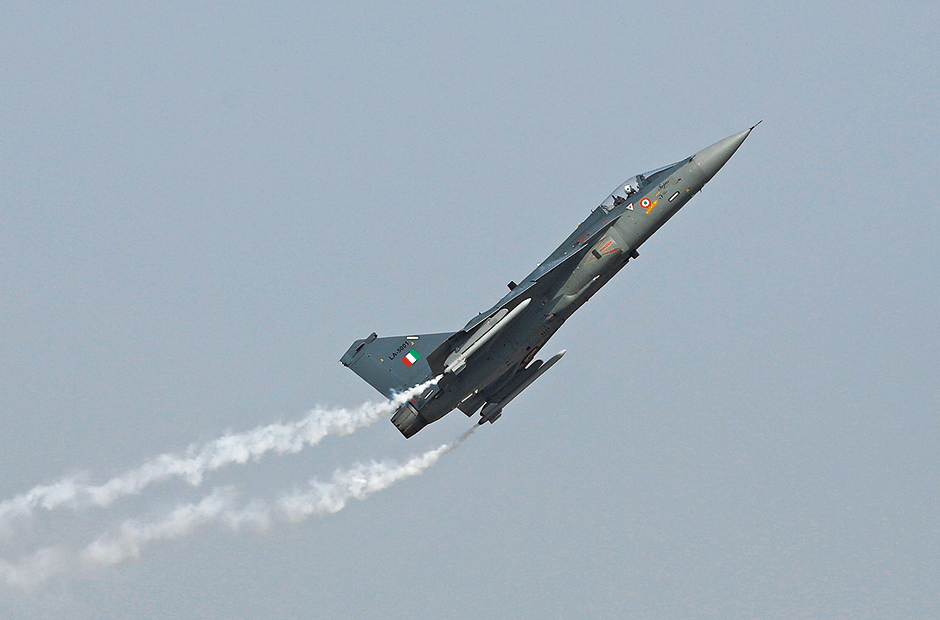
Over the past few decades, India desired to have its defence — from high-end ordnance to basic military requirements — met through domestic production. In reality, the exact opposite happened. The country imports about 70 per cent of its defence equipment. Asia’s third-largest economy spent $50.6 billion (Dh186 billion) on defence last year, up from $46.6 billion in 2015.
India now has the fourth-largest defence budget, overtaking Saudi Arabia and Russia, according to the 2016 Jane’s Defence Budgets report. Spending is projected to reach $64.8 billion by 2020, according to research firm IHS.
The government has been looking at increasing the share of domestic manufacturing, but building a first-rate defence industrial base is still a long way off. Efforts are being made to encourage greater involvement of the private sector. “Under the Make in India programme, the Indian government has undertaken a host of initiatives, including a new domestic industry-centric procurement category, simplification of industrial licensing, rationalisation of taxes, export promotion measures and liberalisation of foreign direct investment (FDI) policy,” says Laxman Kumar Behera, Research Fellow at the Institute for Defence Studies and Analyses, New Delhi. “These initiatives have provided a much-needed impetus to local industry, particularly the private sector.”
Given that India is one of the largest importers of military inventory, with a meagre FDI equity inflow into the sector over the past 15 years — $5.12 million — it was crucial to overhaul a defence industry dominated by state-owned enterprises and heavy-handed bureaucracy.
“India’s immediate objective is to localise manufacturing so that the domestic market is better served,” says Sanjaya Baru, writer and policy analyst. “To this end, the government is encouraging foreign suppliers to begin manufacturing in India. If this strategy succeeds, it could become an international hub in some years.”
India’s increased defence cooperation with the US under the Defence Technology and Trade Initiative is expected to develop a robust defence industry and integrate it into the global supply chain of major original equipment manufacturers. Last year, Boeing and Lockheed Martin offered to build their fighter jets F/A-18 and F-16 under the Make in India initiative. Boeing announced a joint venture with Tata to manufacture aerostructures for the AH-64 Apache helicopter. Sweden’s Saab has expressed willingness to build its Gripen fighter in India.
Last year, Tejas, the first home-grown light combat aircraft, was inducted into the Indian Air Force, albeit with imported hardware. To date, the country’s successes in building cruise and ballistic missiles, nuclear submarines and aircraft carriers have been achieved with foreign partners.
Analysts agree India can achieve self-reliance through co-development. “Now, India’s defence policy is facilitating co-development,” says Baru. “Private sector firms such as L&T, Reliance Group, Mahindra Group and Bharat Forge are partnering with American, European and Russian companies for defence manufacturing.” Recent policy reforms, including allowing 100 per cent FDI and the inclusion of the indigenously designed, developed and manufactured category in the Defence Procurement Policy (DPP) 2016, are also seen as a game changer. “The reforms provide ample scope for foreign technology to be part of the Make in India initiative,” adds Behera. “Besides, the current indigenisation requirement in a host of procurement categories allows up to 60 per cent foreign technology.”
Despite this, there are hurdles, he says: “Two main challenges confronting policymakers are the gross inefficiency of the state-owned/controlled defence industry and the slow decision-making process.”
Notwithstanding the easing of FDI norms in the defence sector, at the end of the day India has to create an ecosystem to manufacture products locally, adds Behera. “Liberalisation of FDI policy is a step in the right direction. This policy needs to be linked to specific procurement projects to make it viable and successful.”
Overall, the moves are welcome but insufficient, says C. Uday Bhaskar, Director of Society for Policy Studies in New Delhi. Although DPP 2016 has removed ambiguities and ensured transparency, Bhaskar says it’s too early to celebrate.
“Defence procurement in India is still dealing with corruption scandals. We’ll have to wait couple of years to see how DPP 2016 translates into action. There is no dearth of earnest intent, but the prevailing ecosystem of governance does not support speedy and honest implementation. Unless this is redressed, it is difficult to envisage harmonisation of intent and implementation.”


